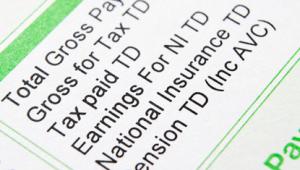Chancellor George Osborne’s proposals to cut welfare spending, which include reducing the household benefit cap from £26,000 to £20,000 (£23,000 in London) and a four-year working-age benefit freeze, would reduce incomes significantly, the think-tank said.
This was particularly true for households where no one works, the report found, which will lose on average £2,069 and cannot gain from the new wage rate.
Overall, the IFS concluded that, on average, only around 13% (£150 per year) of the £1,090 annual losses faced by working age households in receipt of benefits and tax credits would by offset by the NLW.
Among households with someone in paid work, those eligible for benefits and tax credits were estimated to lose an average of £750 per year from tax and benefits changes. On the other hand, the average gain from the new NLW, which will be introduced for those aged 25 and over at £7.20 from next April and reach £9 an hour by 2020, is expected to lead to an increase in wages of £200 per year. This suggests that the new NLW will, on average, compensate for 26% of the losses this group.
IFS research economist William Elming said the National Living Wage would only offer partial compensation for the benefit changes.
“There may be strong arguments for introducing the new NLW, such as increasing earnings and the incentives to work for the low paid,” he said.
“However, the new NLW cannot be considered a direct substitute for benefits and tax credits aimed at lower income households. The wage increases are not as large as the benefit cuts. And, it is not targeted at the same group who lose from the cuts.”
According to the IFS, the largest proportion of households gaining from the higher wage rate are in the middle of the income distribution, while it is households in the lower half of the income distribution who stand to lose the most from the reforms to taxes and benefits.





















